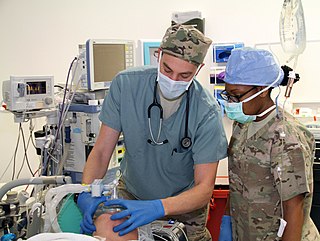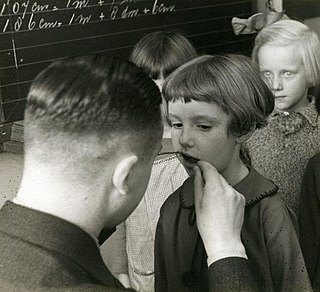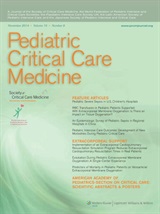Sedation is the reduction of irritability or agitation by administration of sedative drugs, generally to facilitate a medical procedure or diagnostic procedure. Examples of drugs which can be used for sedation include isoflurane, diethyl ether, propofol, etomidate, ketamine, pentobarbital, lorazepam and midazolam.

Hypospadias is a common variation in fetal development of the penis in which the urethra does not open from its usual location in the head of the penis. It is the second-most common birth abnormality of the male reproductive system, affecting about one of every 250 males at birth. Roughly 90% of cases are the less serious distal hypospadias, in which the urethral opening is on or near the head of the penis (glans). The remainder have proximal hypospadias, in which the meatus is all the way back on the shaft of the penis, near or within the scrotum. Shiny tissue that typically forms the urethra instead extends from the meatus to the tip of the glans; this tissue is called the urethral plate.

Anesthesiology, anaesthesiology, or anaesthesia is the medical specialty concerned with the total perioperative care of patients before, during and after surgery. It encompasses anesthesia, intensive care medicine, critical emergency medicine, and pain medicine. A physician specialized in anesthesiology is called an anesthesiologist, anaesthesiologist, or anaesthetist, depending on the country. In some countries, the terms are synonymous, while in other countries they refer to different positions, and anesthetist is only used for non-physicians, such as nurse anesthetists.

Desflurane (1,2,2,2-tetrafluoroethyl difluoromethyl ether) is a highly fluorinated methyl ethyl ether used for maintenance of general anesthesia. Like halothane, enflurane, and isoflurane, it is a racemic mixture of (R) and (S) optical isomers (enantiomers). Together with sevoflurane, it is gradually replacing isoflurane for human use, except in economically undeveloped areas, where its high cost precludes its use. It has the most rapid onset and offset of the volatile anesthetic drugs used for general anesthesia due to its low solubility in blood.

Congenital insensitivity to pain with anhidrosis (CIPA) is a rare autosomal recessive disorder of the nervous system which prevents the feeling of pain or temperature, and prevents a person from sweating. Cognitive disorders are commonly coincident. CIPA is the fourth type of hereditary sensory and autonomic neuropathy (HSAN), and is also known as HSAN IV.

Rubinstein–Taybi syndrome (RTS) is a rare genetic condition characterized by short stature, moderate to severe learning difficulties, distinctive facial features, and broad thumbs and first toes. Other features of the disorder vary among affected individuals. These characteristics are caused by a mutation or deletion in the CREBBP and/or EP300 gene located on chromosome 16.
The American Society of Anesthesiologists (ASA) is an educational, research and scientific association of physicians organized to raise the standards of the medical practice of anesthesiology and to improve patient care.

Phenoperidine(Operidine or Lealgin), is an opioid analgesic which is structurally related to pethidine and is used clinically as a general anesthetic.

Micrognathism is a condition where the jaw is undersized. It is also sometimes called mandibular hypoplasia. It is common in infants, but is usually self-corrected during growth, due to the jaws' increasing in size. It may be a cause of abnormal tooth alignment and in severe cases can hamper feeding. It can also, both in adults and children, make intubation difficult, either during anesthesia or in emergency situations.

Pediatric dentistry is the branch of dentistry dealing with children from birth through adolescence. The specialty of pediatric dentistry is recognized by the American Dental Association, Royal College of Dentists of Canada, and Royal Australasian College of Dental Surgeons.
Anesthesia & Analgesia is a monthly peer-reviewed medical journal covering anesthesia, pain management, and perioperative medicine that was established in 1922.
TAC stands for tetracaine, adrenaline, and cocaine, it was introduced by Pryor et al. in 1980. TAC is a topical anesthetic solution for local anesthesia and is recommended for use on pediatric patients.
Annals of Pediatric Cardiology is a peer-reviewed open-access medical journal published on behalf of the Pediatric Cardiology Society of India. The journal publishes articles on the subjects of pediatric cardiology, cardiac surgery, cardiac pathology, cardiac anesthesia, pediatric intensive care, and cardiac imaging. It is indexed with Caspur, CINAHL, DOAJ, EBSCO, Excerpta Medica/EMBASE, Expanded Academic ASAP, JournalSeek, Google Scholar, Health & Wellness Research Center, Health Reference Center Academic, Hinari, Index Copernicus, Indian Science Abstracts, OpenJGate, PubMed, SCOLOAR, SIIC databases, and Ulrich's Periodicals Directory.
The American Dental Society of Anesthesiology (ADSA) is an American professional association established in 1953 and based in Chicago.

Pediatric Critical Care Medicine is a peer-reviewed medical journal that covers intensive care treatment of children and newborns. It is the official journal of the Society of Critical Care Medicine, the World Federation of Pediatric Intensive and Critical Care Societies, the Pediatric Intensive Care Society, the Latin American Society of Pediatric Intensive Care, and the Japanese Society of Pediatric Intensive and Critical Care. It was established in 2000 and is published 12 times a year by Lippincott Williams & Wilkins. The editor-in-chief is Robert C. Tasker. The journal is published in Chinese, English with selected abstracts translated into Chinese, French, Italian, Japanese, Portuguese, and Spanish.
The Pediatric Infectious Disease Journal is a monthly peer-reviewed medical journal covering research pertaining to infectious diseases in children. It was established in 1982 as a bimonthly journal under the name Pediatric Infectious Disease, obtaining its current name in 1987. It is published by Lippincott Williams & Wilkins and the editors-in-chief are John D. Nelson and George H. McCracken Jr..
The effects of early-life exposures to anesthesia on the brain in humans are controversial. Evidence from nonhuman primate research suggests significant developmental neurotoxicity and long-term social impairment, with a dose–response relationship where repeated exposures cause a more severe impact than single ones. Research in humans has not found conclusive clinical evidence of cognitive impairment; however, systematic reviews imply the possibility of greater behavioural impairments in children exposed to anesthesia before the age of three than control subjects.

Caudal anaesthesia, is a form of neuraxial regional anaesthesia conducted by accessing the epidural space via the sacral hiatus. It is typically used in paediatrics to provide peri- and post-operative analgesia for surgeries below the umbilicus. In adults it is used for chronic low back pain management.









